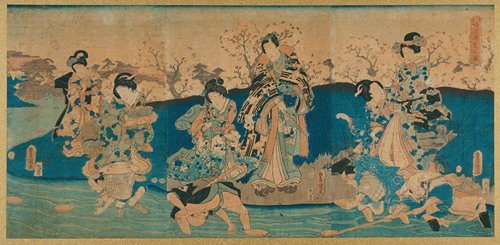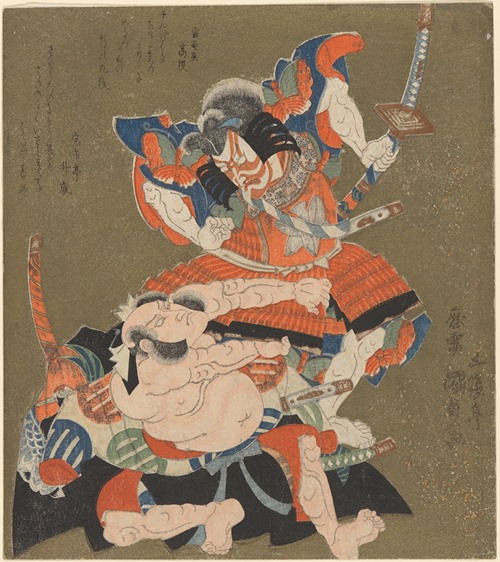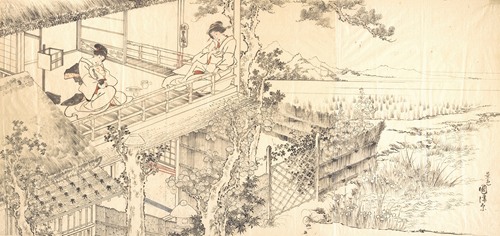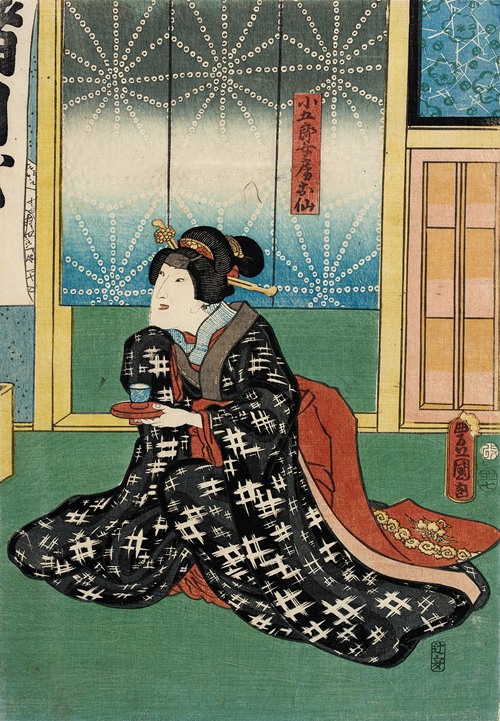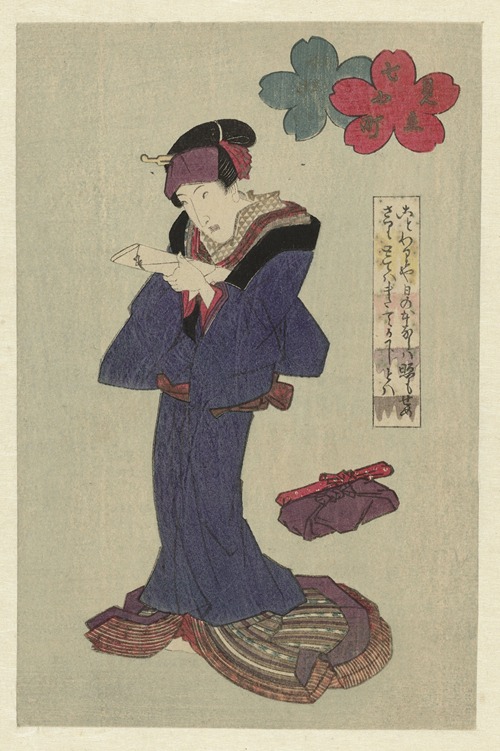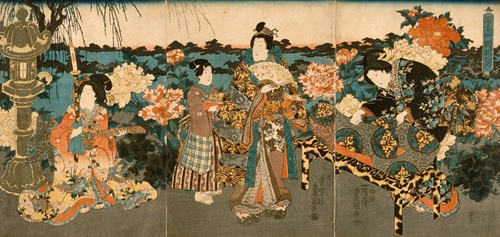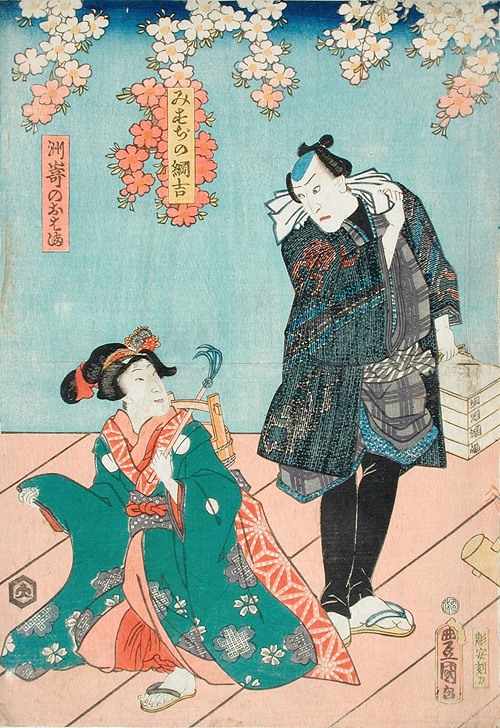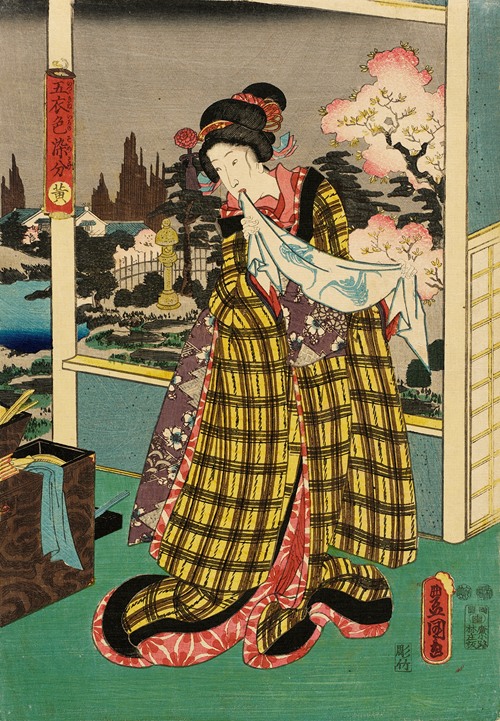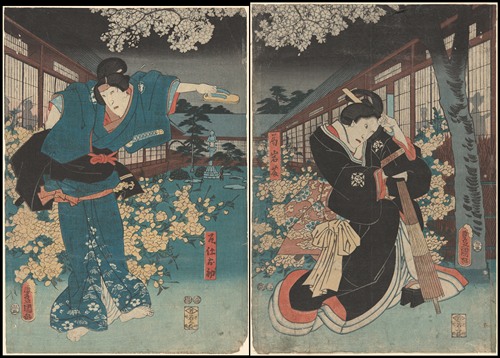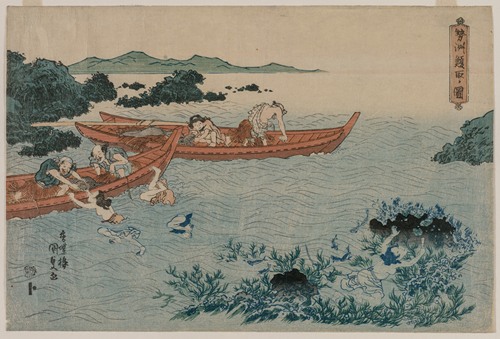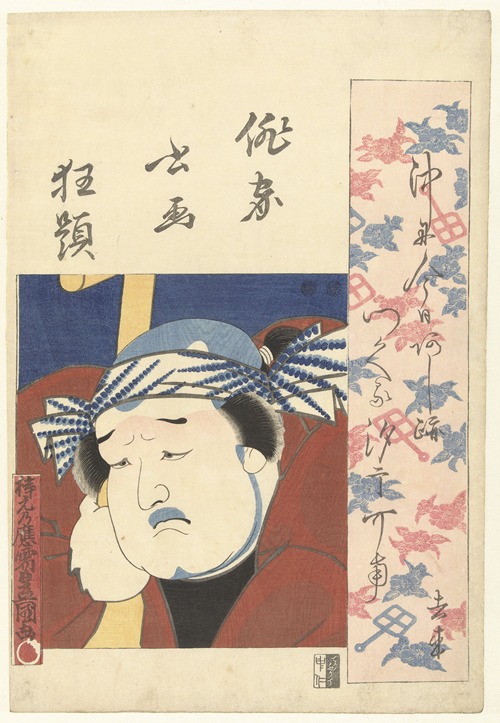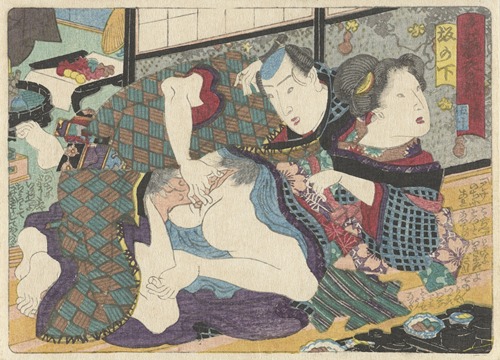

Utagawa Kunisada, also known as Utagawa Toyokuni III (三代 歌川 豊国 Sandai Utagawa Toyokuni), was the most popular, prolific and commercially successful designer of ukiyo-e woodblock prints in 19th-century Japan. In his own time, his reputation far exceeded that of his contemporaries, Hokusai, Hiroshige and Kuniyoshi.
At the end of the Edo period (1603–1867), Hiroshige, Kuniyoshi and Kunisada were the three best representatives of the Japanese color woodcut in Edo (capital city of Japan, now Tokyo). However, among European and American collectors of Japanese prints, beginning in the late 19th and early 20th century, all three of these artists were actually regarded as rather inferior to the greats of classical ukiyo-e, and therefore as having contributed considerably to the downfall of their art. For this reason, some referred to their works as "decadent".
Beginning in the 1930s and 1970s, respectively, the works of Hiroshige and Kuniyoshi were submitted to a re-evaluation, and these two are now counted among the masters of their art. Thus, from Kunisada alone was withheld, for a long time, the acknowledgment which is due to him. With a few exceptions, such as actor portraits (yakusha-e) and portraits of beautiful women (bijin-ga), at the beginning of his career, and some series of large-size actor head-portraits near the end, it was thought that he had produced only inferior works. It was not until the early 1990s, with the appearance of Jan van Doesburg's overview of the artistic development of Kunisada, and Sebastian Izzard's extensive study of his work, that this picture began to change, with Kunisada more clearly revealed as one of the "giants" of the Japanese print that he was.
